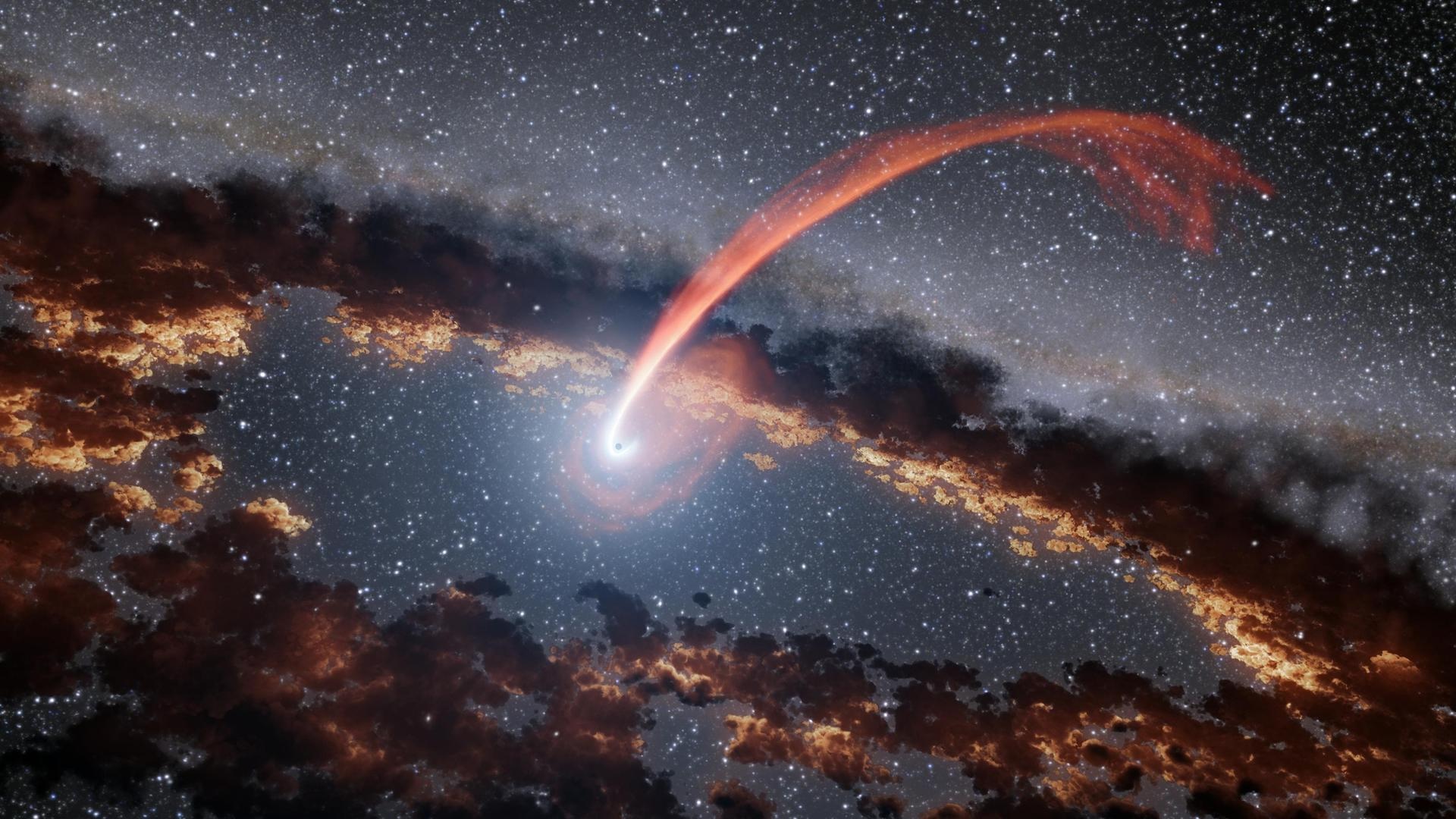Astronomers discover most powerful cosmic explosions since the Big Bang
Astronomers have discovered a new class of bright, long-lasting cosmic explosions that offer a new probe into studying the universe's most distant black holes.

Astronomers have uncovered a new extreme in the universe's catalog of violent phenomena — a class of cosmic explosions so powerful that they rank among the most energetic events since the Big Bang.
These rare, ultra-luminous events were observed in the centers of three distant galaxies, where supermassive black holes lit up as they tore apart massive stars that strayed too close. Unlike typical stellar explosions, which brighten and fade within weeks after dramatic bursts of energy, these cosmic beacons took months to reach peak brightness and remained visible for years. Scientists have now classified these events as extreme nuclear transients (ENTs).
One such event, named Gaia18cdj, released as much energy in a year as 100 suns would emit over their entire lifetimes.
"Off the bat, there was an indication that we were looking at something pretty extreme in terms of the energy," Jason Hinkle, now an astronomer at the University of Illinois Urbana-Champaign who identified the flares while sifting through data from the now-retired Gaia space telescope, told Live Science.
What makes ENTs stand out is not just their immense energy but also their longevity, Hinkle said. Their sustained brightness enables them to be seen across vast cosmic distances — much farther than typical stellar explosions — giving astronomers a rare opportunity to probe the distant, early universe.
"We're pushing the upper bounds of what we understand to be the most energetic environments of the universe," study co-author Anna Payne, a staff scientist at the Space Telescope Science Institute in Maryland, said in a NASA statement.
Get the world’s most fascinating discoveries delivered straight to your inbox.
The events, described in a study published June 4 in the journal Science Advances, provide scientists with a powerful new tool to study the earliest, most distant black holes and how they evolved alongside their host galaxies.
A new class of cataclysm
In 2020, Hinkle noticed a couple of unusually bright and long-lasting flares while analyzing data from the Gaia telescope, which monitored the sky for changes in light from distant stars and galaxies. The two flares were originally recorded in 2016 and 2018.
Then, in 2023, a third, strikingly similar event was detected by the Zwicky Transient Facility, nicknamed "Barbie" or "Scary Barbie" for its catalog ID ZTF20abrbeie. The discovery helped confirm that these flares weren't isolated anomalies and instead represent a new class of powerful cosmic explosions, Hinkle said.
"It kind of all clicked together," he said. "There was this admittedly rare but very exciting class of extreme nuclear transients."
To pin down the identity of these mysterious outbursts, the researchers coordinated observations using a network of observatories, including NASA's now-retired NEOWISE asteroid hunter, which helped map the dust surrounding each black hole, offering clues about their environments.
Meanwhile, the Neil Gehrels Swift Observatory helped confirm that these events weren't caused by supernovas or other known astrophysical processes, the study noted. The observatory's data showed that the outbursts emitted most of their energy in ultraviolet (UV) light, and the way the X-ray, UV, and optical light brightened and faded over time created a distinctive light curve. That pattern — like a cosmic fingerprint — matched what astronomers would expect from a black hole tearing a star apart, confirming that the outbursts were linked to supermassive black holes at the centers of galaxies.
Now, with three confirmed cases, astronomers hope to use the data as a guide for upcoming surveys to identify more flares that fit the ENT profile — and in doing so, uncover quiescent, distant black holes that would otherwise remain hidden.
One key mission that could help spot ENTs is NASA's Nancy Grace Roman Space Telescope, slated for launch in early 2027 — though its progress has been clouded by budget concerns. With its powerful infrared sensitivity, it could detect dozens of ENTs from more than 12 billion years ago. Additional discoveries are expected from ground-based observations from the Legacy Survey of Space and Time at the Vera C. Rubin Observatory, which will scan vast regions of the sky with unprecedented depth and resolution.
Hinkle suspects these upcoming surveys could not only catalog more ENTs but also uncover variations and diversity within this new class of cosmic explosions.
"Nature likes to be tricky," he said. "What is the periphery that we haven't actually explored yet?"

Sharmila Kuthunur is an independent space journalist based in Bengaluru, India. Her work has also appeared in Scientific American, Science, Astronomy and Space.com, among other publications. She holds a master's degree in journalism from Northeastern University in Boston. Follow her on BlueSky @skuthunur.bsky.social
You must confirm your public display name before commenting
Please logout and then login again, you will then be prompted to enter your display name.


